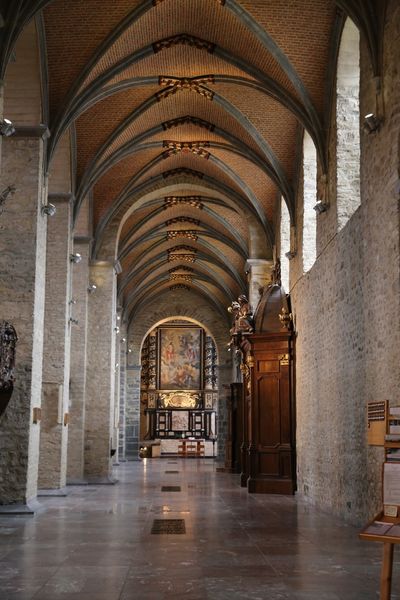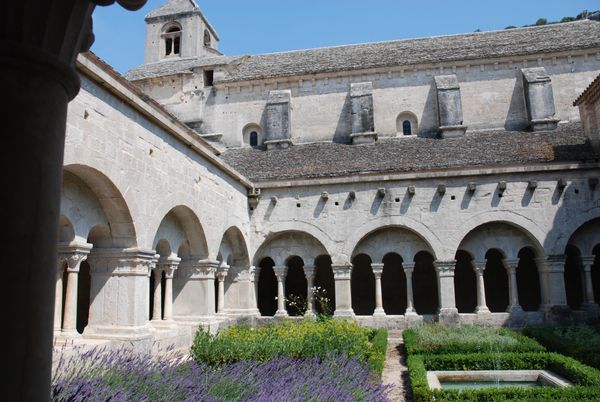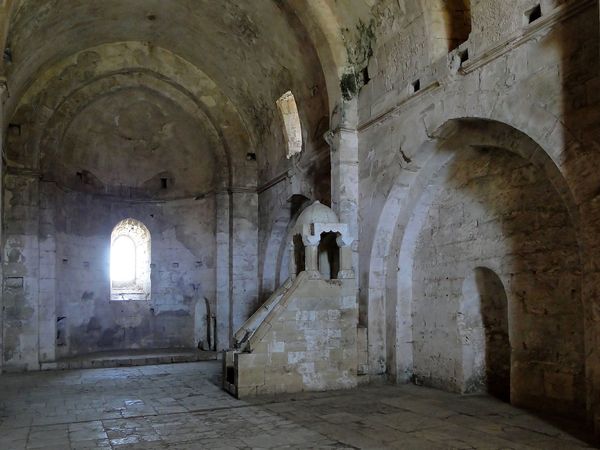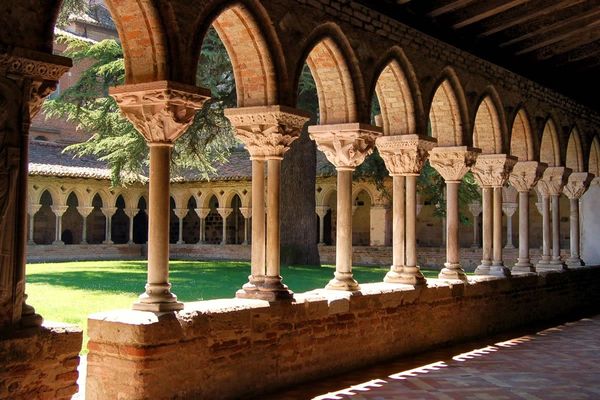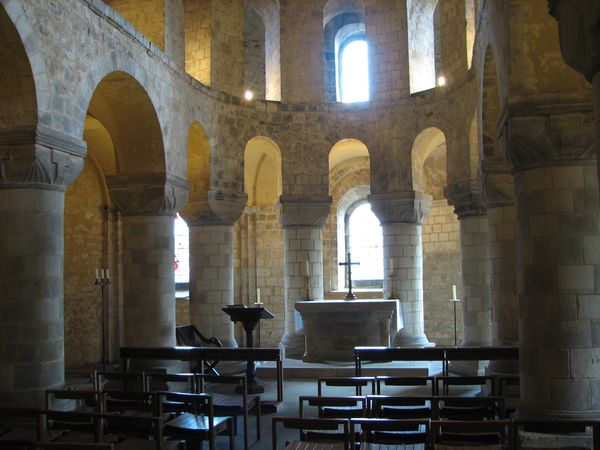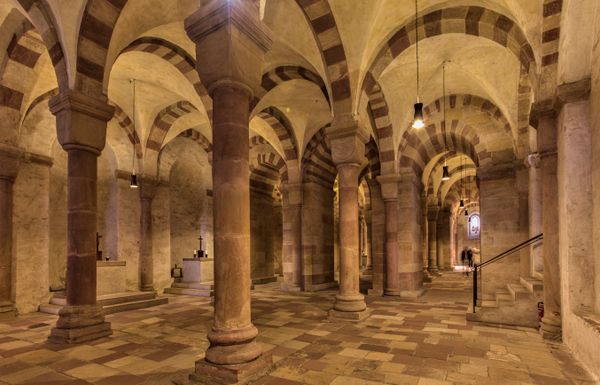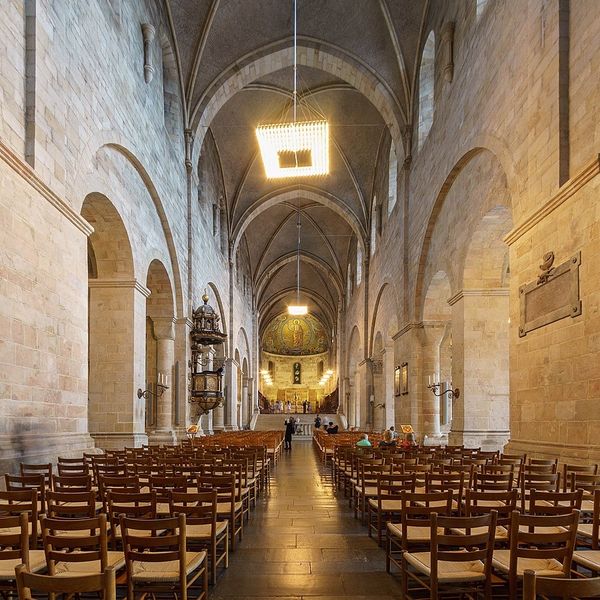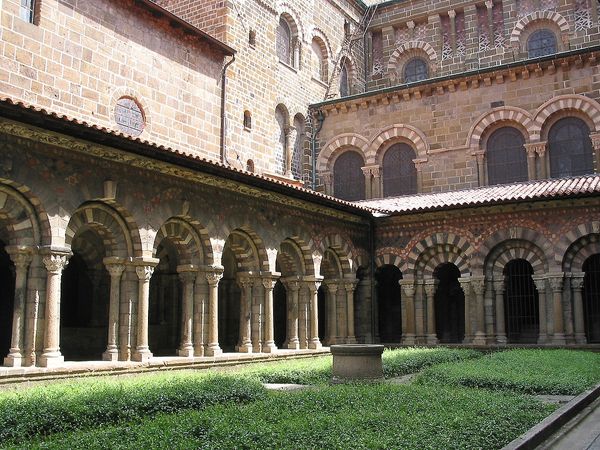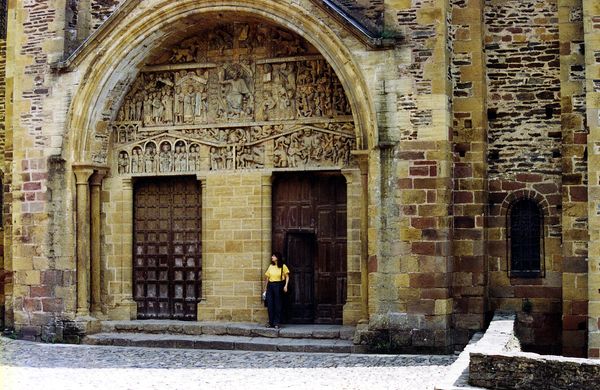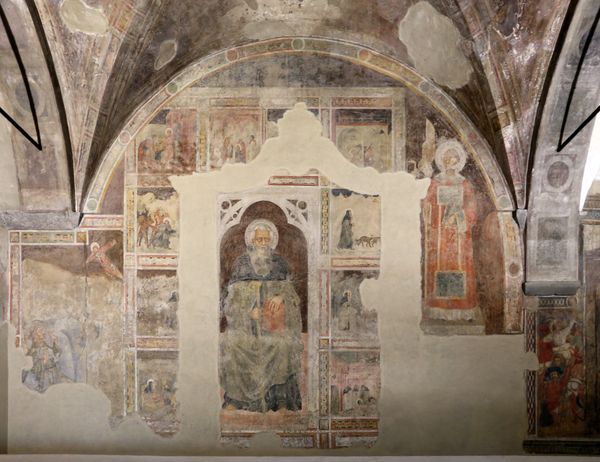
architecture
#
medieval
#
sculpture
#
holy-places
#
historic architecture
#
romanesque
#
column
#
urban art
#
arch
#
history-painting
#
architecture
#
historical building
#
building
Copyright: Public domain
The Abbaye Saint Philibert de Tournus, a marvel of Romanesque architecture, invites us to ponder the enduring power of symbols. The rounded arches, a dominant motif, speak to more than structural support; they echo ancient Roman triumphal arches, symbols of power and divine approval. These semi-circular forms, which here define sacred space, appeared much earlier in triumphal arches, such as the Arch of Titus in Rome, commemorating victory and imperial authority. Later, the arch was adopted by early Christians for the catacombs, spaces of worship and burial. Here, the shape signifies both worldly triumph and spiritual promise, evolving from a symbol of conquest to one of salvation. This reflects a cyclical progression, a palimpsest where each layer of meaning builds upon the last. The use of arches creates a deep, subconscious resonance. In dreams, tunnels and arches often symbolize transitions, passages from one state to another. In Abbaye Saint Philibert de Tournus, we are invited to reflect on the cyclical nature of time and the eternal passage of the soul, a powerful force engaging us on a deep, subconscious level.
Comments
No comments
Be the first to comment and join the conversation on the ultimate creative platform.
